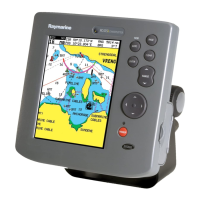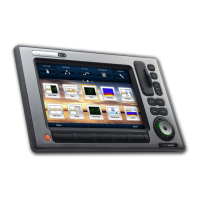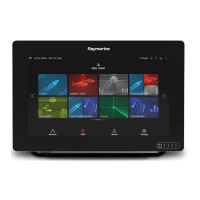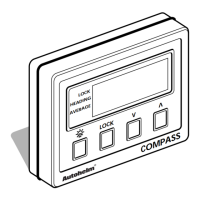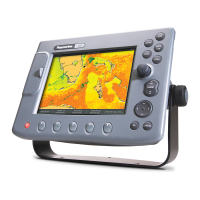44
HSB Series Chartplotter
3.2 Working with Waypoints
Introduction
The HSB series Chartplotter enables you to place up to 998 waypoints: a
waypoint is a position entered on a chart as a reference, or as a place to
go to. All waypoints
placed on the chartplotter
are stored in a waypoint
database list which includes symbol, position, bearing, range and
additional data. All waypoints in the database are displayed on the
screen, unless you set waypoint display off in the Chart Set Up menu, as
described in Chapter 5. You can select a waypoint, either on-screen or
from the list, for editing.
The waypoint is usually placed at the cursor position and can be part of a
route; you can also place a waypoint at the vessel’s current position; a
waypoint at the vessel position includes additional information (if
available) on the depth and temperature when it was placed. You can
place waypoints before you install the chartplotter on your vessel.
Note: Radar marks may also be displayed on the screen if your
chartplotter is a combined radar/chartplotter or is part of an integrated
system; these are screen annotations - you cannot go to marks, nor
can they be included in routes.
When you place a new waypoint, it is displayed using the default symbol
of a cross. The waypoint is added to the waypoint list and named with the
next available number. You can use the edit functions to change the
symbol and name. When the cursor is positioned over a waypoint, the
waypoint bearing and range are displayed.
Waypoints in the current route are available on other SeaTalk
instruments that support currrent route transfer, for example, another
HSB series chartplotter or ST80 Masterview. You can also transfer
waypoints between the chartplotter and other NMEA or SeaTalk
instruments using the Waypoint Transfer functions.
This section explains how to perform the following tasks using the on-
screen cursor and the waypoint list:
• Placing a Waypoint
• Selecting a Waypoint
• Displaying Waypoint data
• Editing a Waypoint (symbol, name & position)
• Erasing a Waypoint
• Moving a Waypoint
Working with
Waypoints
